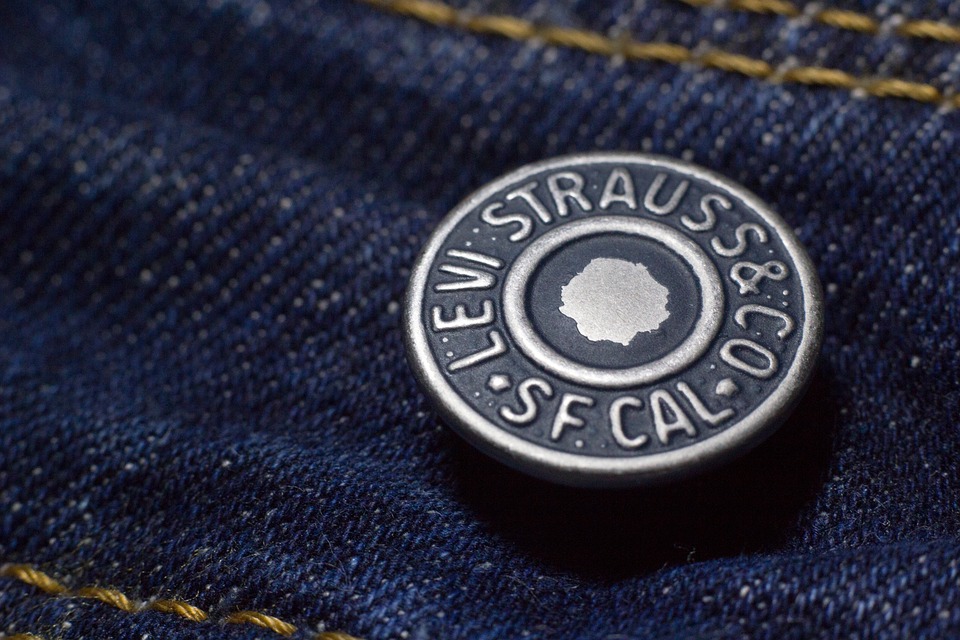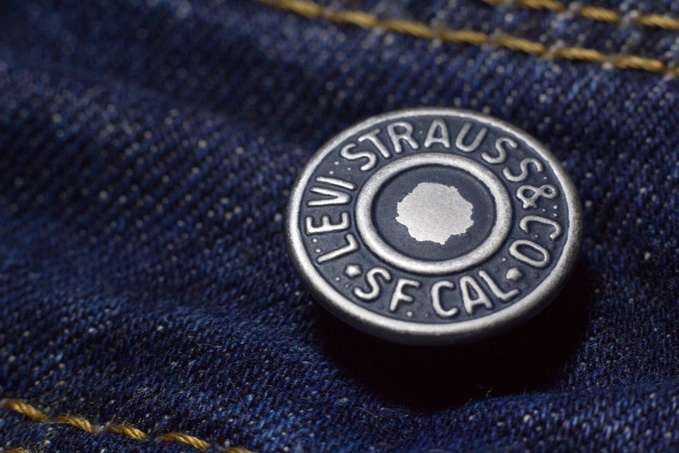Last week, Levi Strauss, one of the oldest American companies that invented blue jeans, was again listed on the stock exchange. During the first hours of trading, the value of its shares rose by more than 30%.
Founded during the gold rush in California as a manufacturer of durable men's jeans, Levi’s has been on the rise again in the past few years. Under the new leadership, a company with a 165-year history has reduced its debt burden, intensified marketing and invested in other categories of goods.
Now women's jeans and tops (T-shirts, blouses, etc.) are the fastest growing segments of its business. In 2018, revenues from tops increased by 38% and reached $ 1.1 billion (largely due to popularity of branded T-shirts). After upgrading women's clothing, sales increased by 29% to $ 1.6 billion. “The best the company could do was to diversify its portfolio and rely less on men's clothing,” said Craig Johnson, President of Customer Growth Partners, a consulting and research firm. “If you look at where growth is possible in the denim market, you will see that this is mainly in the field of women's clothing.” According to the NPD Group, sales of women's clothing grew by 9% from July 2017 to July 2018, and the denim market as a whole grew only by 5%.
Betting on women's clothing
Levi’s re-launched women's clothing line in 2015, presenting many new styles and stretching fabric in all directions for greater comfort. Customers paid attention to the novelties: sales of women's clothing continued to grow for 14 quarters in a row. In 2016, Kylie Jenner posted an Instagram photo of her wearing Levi’s Wedgie Fit jeans. In 2017, Beyoncé appeared in Levi’s denim shorts during a concert at the Coachella festival.
The restart has partly been prompted by a desire to respond to growing supply of casual sportswear from manufacturers such as Lululemon and Athleta, which are crowding Levi’s in its niche. “It drives me crazy that women wear workout pants in good restaurants: denim would look much better. But they prefer sportswear because it’s more comfortable,” Levi’s CEO Chip Bergh wrote in a 2018 essay for the Harvard Business Review.
Despite attempts to diversify its range, the company still sells mainly men's trousers. In 2018, 69% of revenue was obtained from sales of men's clothing (for comparison, the number was 80% in 2011). The line of men's jeans model 501, invented back in 1890, remains the most popular product of the company. In addition, Levi’s manufactures Dockers, a popular khaki line of men's clothing.
Bergh, who took the helm of Levi’s in 2011, has paid a lot of attention to the company's marketing. “When I came, we spent more on paying interest than on advertising, and in such conditions it’s difficult to develop a brand,” wrote Bergh in the Harvard Business Review (the company has had a debt of about $ 2 billion since the 1980s). The CEO began to increase Levi’s presence on television and on the Internet, and also entered into collaborative agreements with trendsetters on social networks that could have an impact on young audiences. In 2013, Levi’s was featured at the San Francisco 49ers Stadium, where the Super Bowl was held in 2016.
In 2018, the company's net profit amounted to $ 283 million. Revenue increased by 14% to $ 5.6 billion. This is more than in 2011. Then, the net profit was $ 135 million, and revenue - $ 4.8 billion. In addition, since 2011, the company has paid off debts amounting to $ 1 billion.
“We have excellent business performance, we look to the future with optimism, and our brands are very popular,” said Harmit Singh, CFO at Levi Strauss.
Few companies dare to go public in a tough retail environment. Clothing manufacturers are making great efforts to keep up with changing consumer preferences and to withstand competition in a world that is now buying online. The last two IPOs in this area were held by Canada Goose and Stitch Fix, which went public in the past two years and attracted investor interest: price of their shares rose 200% and 100%, respectively. However, the manufacturer of women's clothing J.Jill is not doing so well: price of its shares fell by 55% after an IPO in 2017.
Not surprisingly, Neiman Marcus canceled its IPO in January 2017, almost two years after filing the application. And Revolve, an online clothing store headquartered in Los Angeles, filed documents for an IPO in September 2018, but has not yet entered the stock exchange.
The New York Stock Exchange, on which Levi’s shares are now trading with the ticker LEVI, softened the dress code for one day and lifted the ban on wearing jeans for the company's debut.
source: forbes.com
Founded during the gold rush in California as a manufacturer of durable men's jeans, Levi’s has been on the rise again in the past few years. Under the new leadership, a company with a 165-year history has reduced its debt burden, intensified marketing and invested in other categories of goods.
Now women's jeans and tops (T-shirts, blouses, etc.) are the fastest growing segments of its business. In 2018, revenues from tops increased by 38% and reached $ 1.1 billion (largely due to popularity of branded T-shirts). After upgrading women's clothing, sales increased by 29% to $ 1.6 billion. “The best the company could do was to diversify its portfolio and rely less on men's clothing,” said Craig Johnson, President of Customer Growth Partners, a consulting and research firm. “If you look at where growth is possible in the denim market, you will see that this is mainly in the field of women's clothing.” According to the NPD Group, sales of women's clothing grew by 9% from July 2017 to July 2018, and the denim market as a whole grew only by 5%.
Betting on women's clothing
Levi’s re-launched women's clothing line in 2015, presenting many new styles and stretching fabric in all directions for greater comfort. Customers paid attention to the novelties: sales of women's clothing continued to grow for 14 quarters in a row. In 2016, Kylie Jenner posted an Instagram photo of her wearing Levi’s Wedgie Fit jeans. In 2017, Beyoncé appeared in Levi’s denim shorts during a concert at the Coachella festival.
The restart has partly been prompted by a desire to respond to growing supply of casual sportswear from manufacturers such as Lululemon and Athleta, which are crowding Levi’s in its niche. “It drives me crazy that women wear workout pants in good restaurants: denim would look much better. But they prefer sportswear because it’s more comfortable,” Levi’s CEO Chip Bergh wrote in a 2018 essay for the Harvard Business Review.
Despite attempts to diversify its range, the company still sells mainly men's trousers. In 2018, 69% of revenue was obtained from sales of men's clothing (for comparison, the number was 80% in 2011). The line of men's jeans model 501, invented back in 1890, remains the most popular product of the company. In addition, Levi’s manufactures Dockers, a popular khaki line of men's clothing.
Bergh, who took the helm of Levi’s in 2011, has paid a lot of attention to the company's marketing. “When I came, we spent more on paying interest than on advertising, and in such conditions it’s difficult to develop a brand,” wrote Bergh in the Harvard Business Review (the company has had a debt of about $ 2 billion since the 1980s). The CEO began to increase Levi’s presence on television and on the Internet, and also entered into collaborative agreements with trendsetters on social networks that could have an impact on young audiences. In 2013, Levi’s was featured at the San Francisco 49ers Stadium, where the Super Bowl was held in 2016.
In 2018, the company's net profit amounted to $ 283 million. Revenue increased by 14% to $ 5.6 billion. This is more than in 2011. Then, the net profit was $ 135 million, and revenue - $ 4.8 billion. In addition, since 2011, the company has paid off debts amounting to $ 1 billion.
“We have excellent business performance, we look to the future with optimism, and our brands are very popular,” said Harmit Singh, CFO at Levi Strauss.
Few companies dare to go public in a tough retail environment. Clothing manufacturers are making great efforts to keep up with changing consumer preferences and to withstand competition in a world that is now buying online. The last two IPOs in this area were held by Canada Goose and Stitch Fix, which went public in the past two years and attracted investor interest: price of their shares rose 200% and 100%, respectively. However, the manufacturer of women's clothing J.Jill is not doing so well: price of its shares fell by 55% after an IPO in 2017.
Not surprisingly, Neiman Marcus canceled its IPO in January 2017, almost two years after filing the application. And Revolve, an online clothing store headquartered in Los Angeles, filed documents for an IPO in September 2018, but has not yet entered the stock exchange.
The New York Stock Exchange, on which Levi’s shares are now trading with the ticker LEVI, softened the dress code for one day and lifted the ban on wearing jeans for the company's debut.
source: forbes.com



















